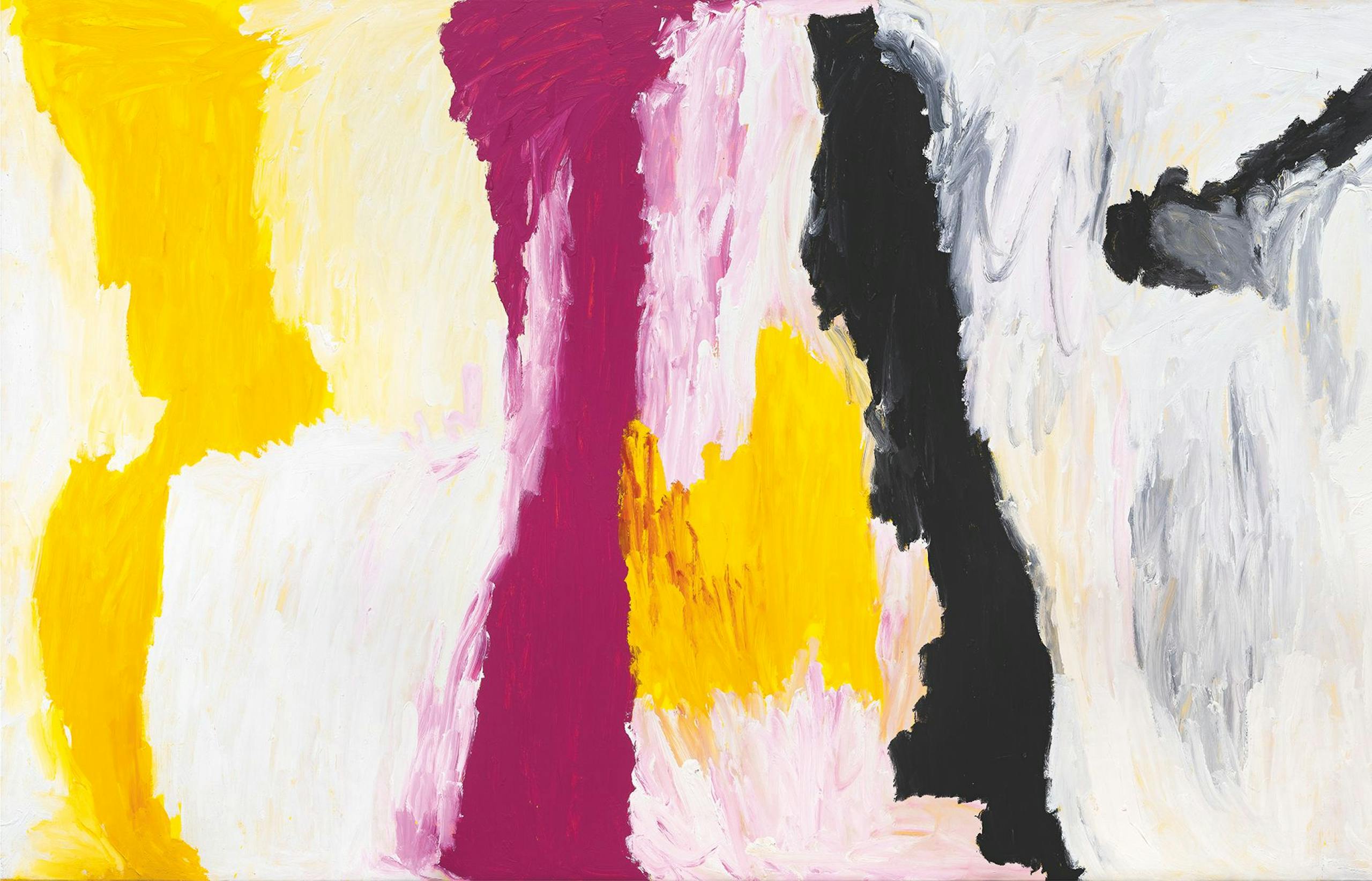
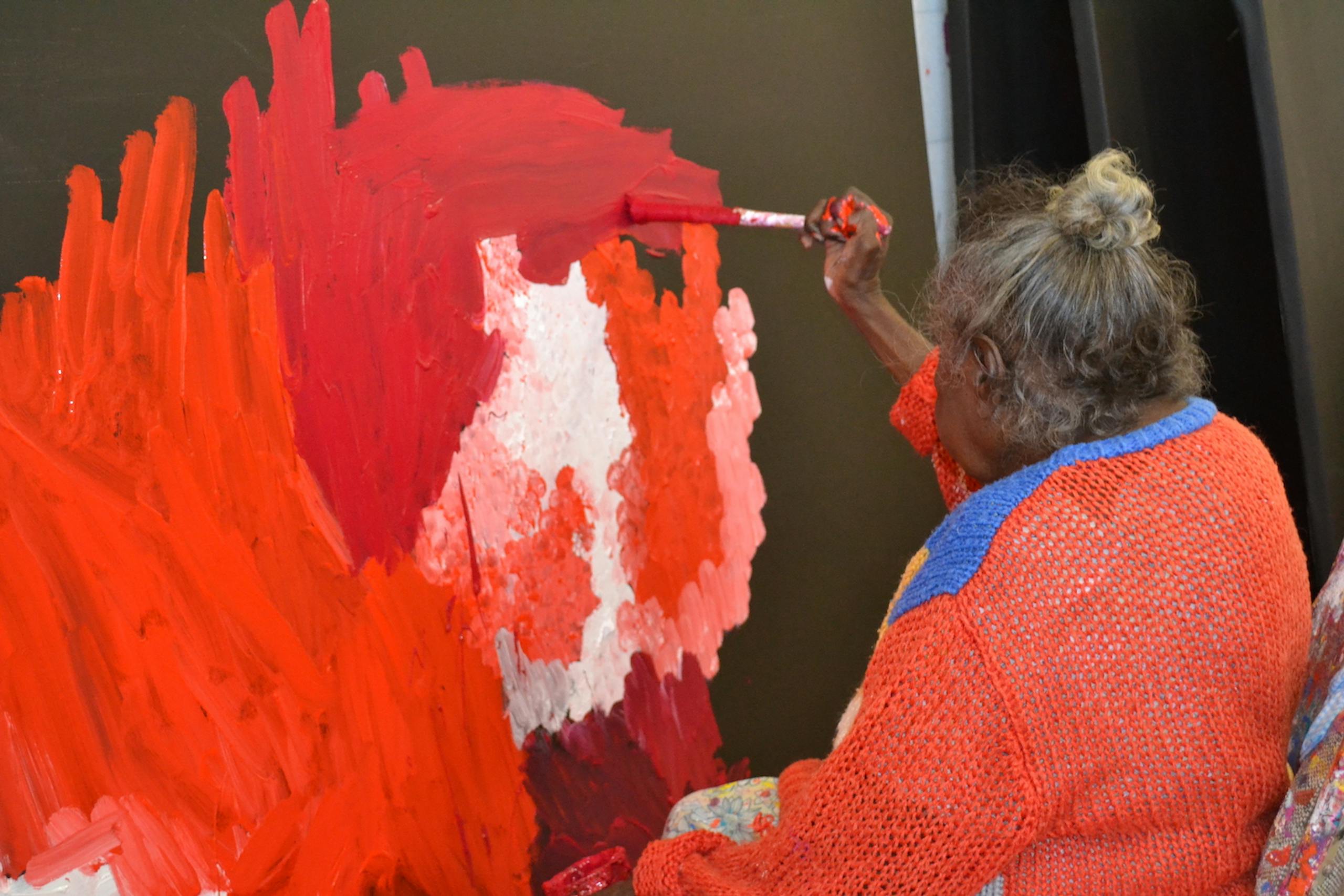
Sally Gabori, Mornington Island Arts and Crafts Centre, 2008-2012, Photo Inge Cooper © The Estate of Sally Gabori
On the occasion of the exhibition dedicated to Sally Gabori, Fondation Cartier pour l'art contemporain curator Juliette Lecorne tells us about her trip to Australia to discover the origin of the Aboriginal artist's works.
Considered one of the greatest contemporary Australian artists of the past two decades, Mirdidingkingathi Juwarnda Sally Gabori began painting in 2005, around the age of eighty, and developed, in just a few short years and prior to her death in 2015, a unique, vibrantly colorful body of works. Her paintings are as much topographical references to her native island as they are stories with a deep meaning for her, her family and the Kaiadilt community she belongs to.
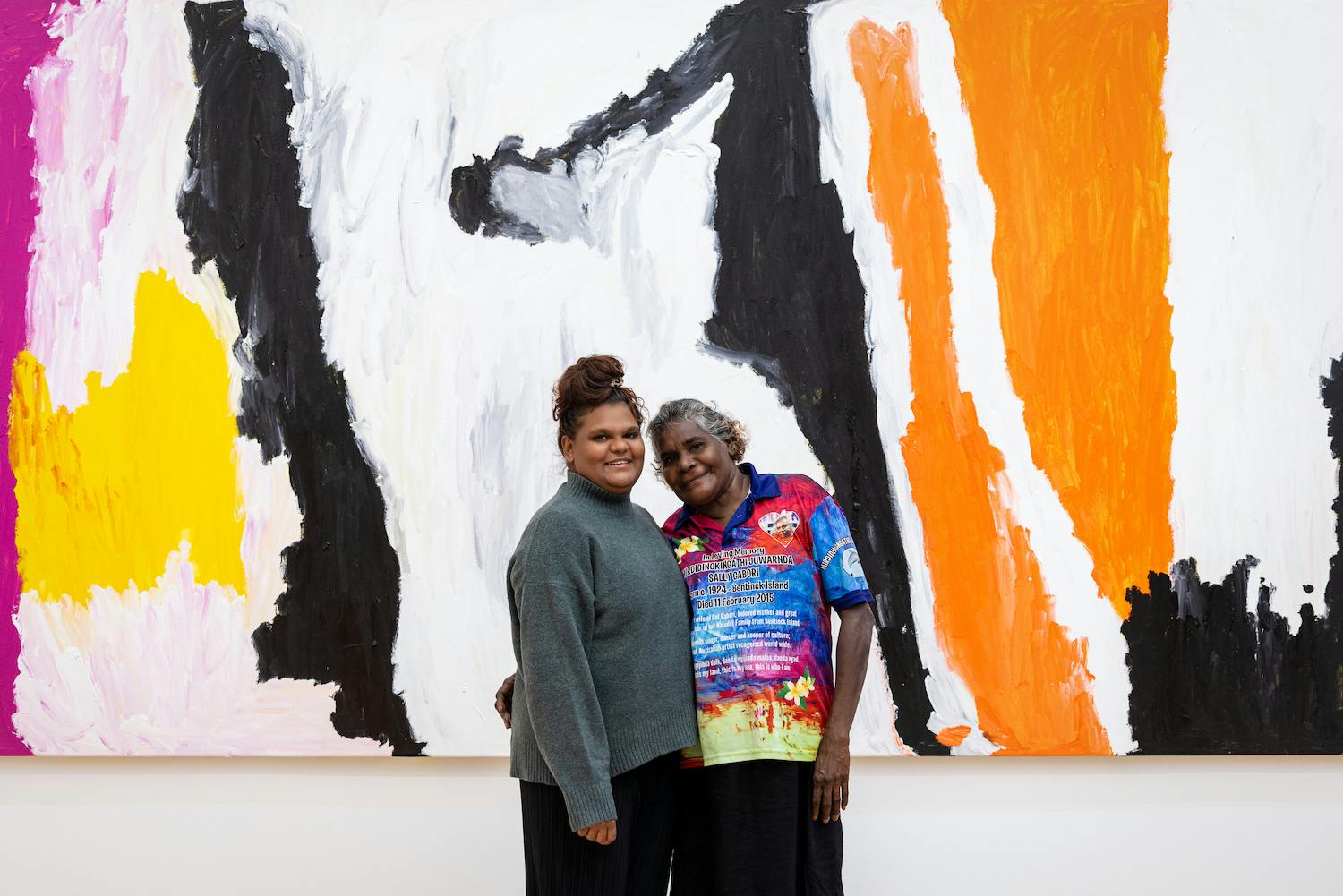
Tori e Amanda Gabori, © The Estate of Sally Gabori © Gianluca Di Ioia
Mirdidingkingathi Juwarnda Sally Gabori was born in c. 1924 on Bentinck Island, in the Gulf of Carpentaria, off the northern coast of Australia. She comes from the Kaiadilt community, one of the last Aboriginal people of islander Australia to establish lasting ties with the Europeans.
This first solo exhibition of her work in Italy is an opportunity to discover the extraordinary story of Sally Gabori, a Kaiadilt woman exiled during colonization, who began painting at the age of 80 to represent, in apparent abstraction, her original lands.
As family and community, land and stories are all embedded in the places Sally Gabori has painted during her career, the documentation around the exhibition had to gather them all. For more than one year, the Fondation Cartier curatorial team along with the major Australian experts on the Kaiadilt culture, has been gathering research over a variety of subjects – from photographs and videos archives of the Kaiadilt community, reports from anthropologists’ expeditions in the 60s, footages of the artist painting in the studio in early 2000s, to phone conversations and discussions and remembrances… we had to feel closer to a subject we knew we would never totally comprehend.
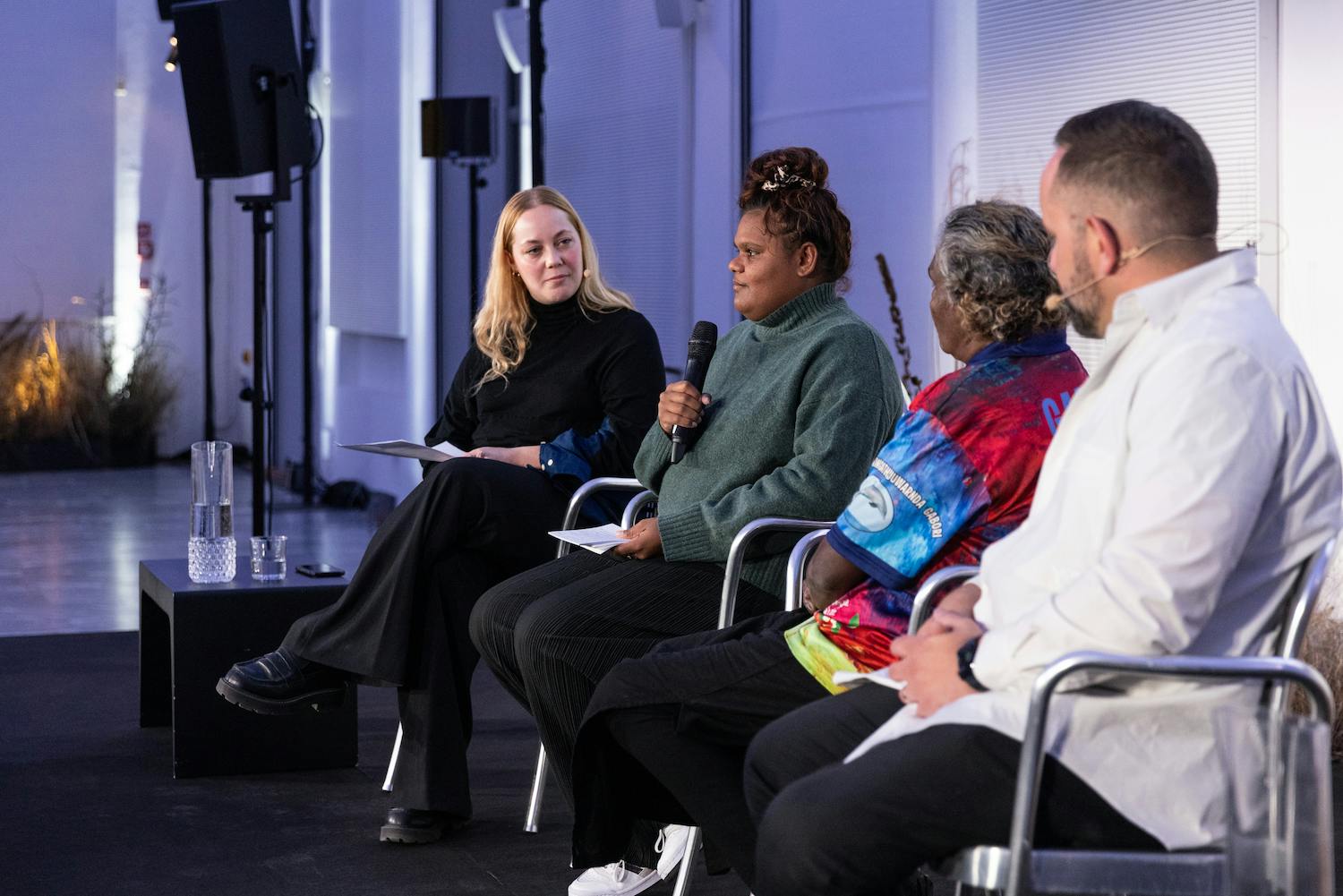
Sally Gabori Night in Triennale Milano, photo Gianluca Di Ioia
Digging into archives hasn’t been the easiest of tasks - if documentation existed in many institutions in Australia, no one has ever been able to gather it all, first of all because consultation of archives in Australia is rarely free, and acquiring copies is always very expensive, which makes the documents inaccessible especially for most communities, so knowledge is not shared. Or, on another side, it could be forbidden to access them without clear permission from the communities. The importance of telling history about First Nations cultures may lead to a possible reconciliation and allow the directly concerned people to enrich it with their perspective. It seems the better way to invent a common future, to increase awareness about the ones who have silenced for so long, with and through the own voices of the community has been the goal.
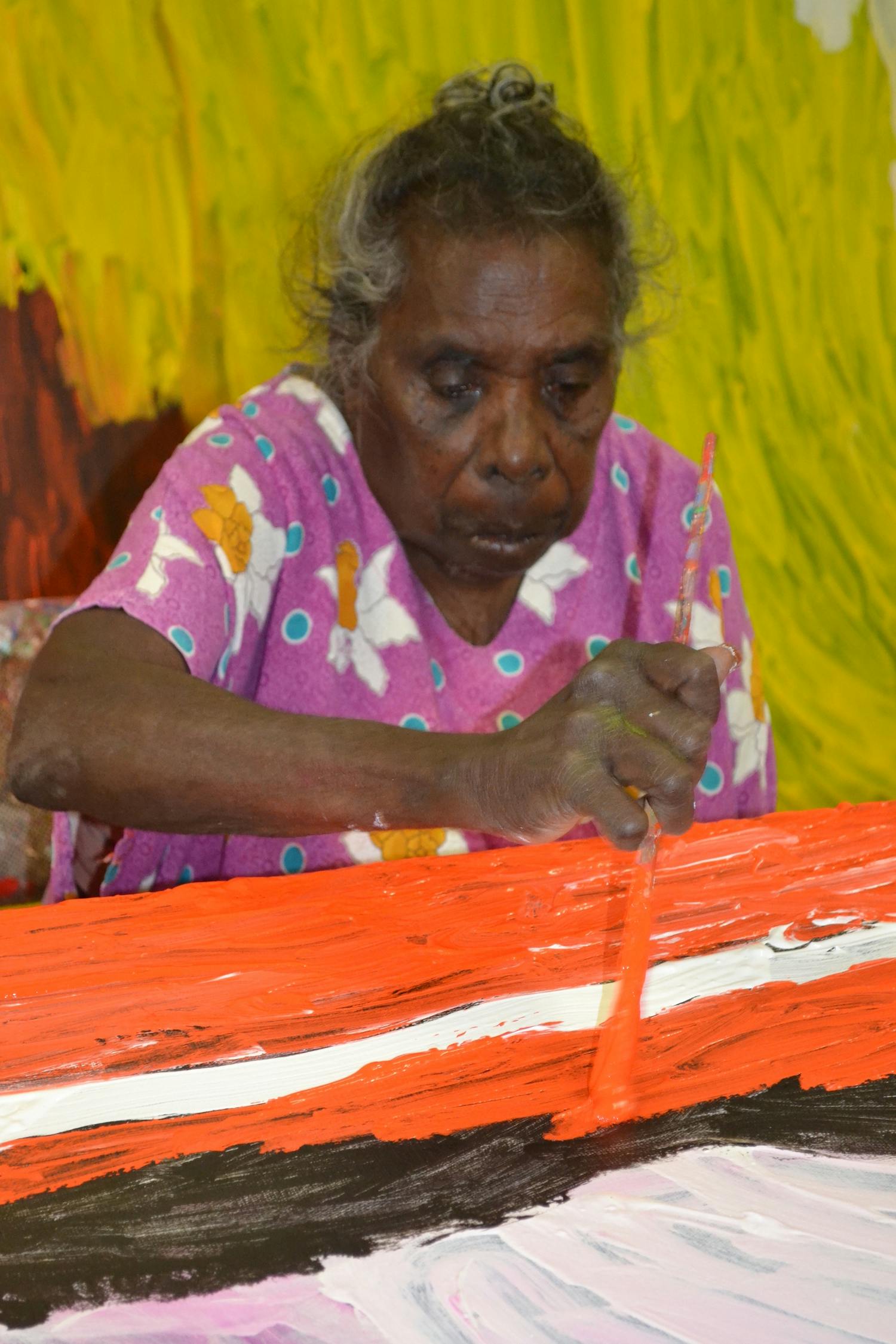
Sally Gabori, Mornington Island Arts and Crafts Centre, 2008-2012, © The Estate of Sally Gabori © Inge Cooper
Led by this leitmotiv, I travelled with a copy of all the archives we could find to share it with Sally Gabori’s family members.Due to covid, a decision was made not to travel to Mornington Island – the community had to deal with several losses in recent weeks, and we didn’t want to interfere with what we call the “sorry business”, that is, an Aboriginal-English term to describe the mourning period when a family member dies and all responsibilities that follow according to the traditional lore.
I was in the precious company of Nicholas Evans, anthropologist and linguist, specialized in endangered languages of Northern Australia and Papua New Guinea. Nicholas Evans met Sally Gabori when he was a PhD student in the mid-80’s and has been adopted by the community since then.
He also speaks Kayardild, the language of Sally Gabori’s community. Even though the family members no longer speak fluently Kayardild, his expertise was key to drafting the archives. We therefore agreed to meet six members of the family aged from 19 to almost 80 and spend a week in Cairns.
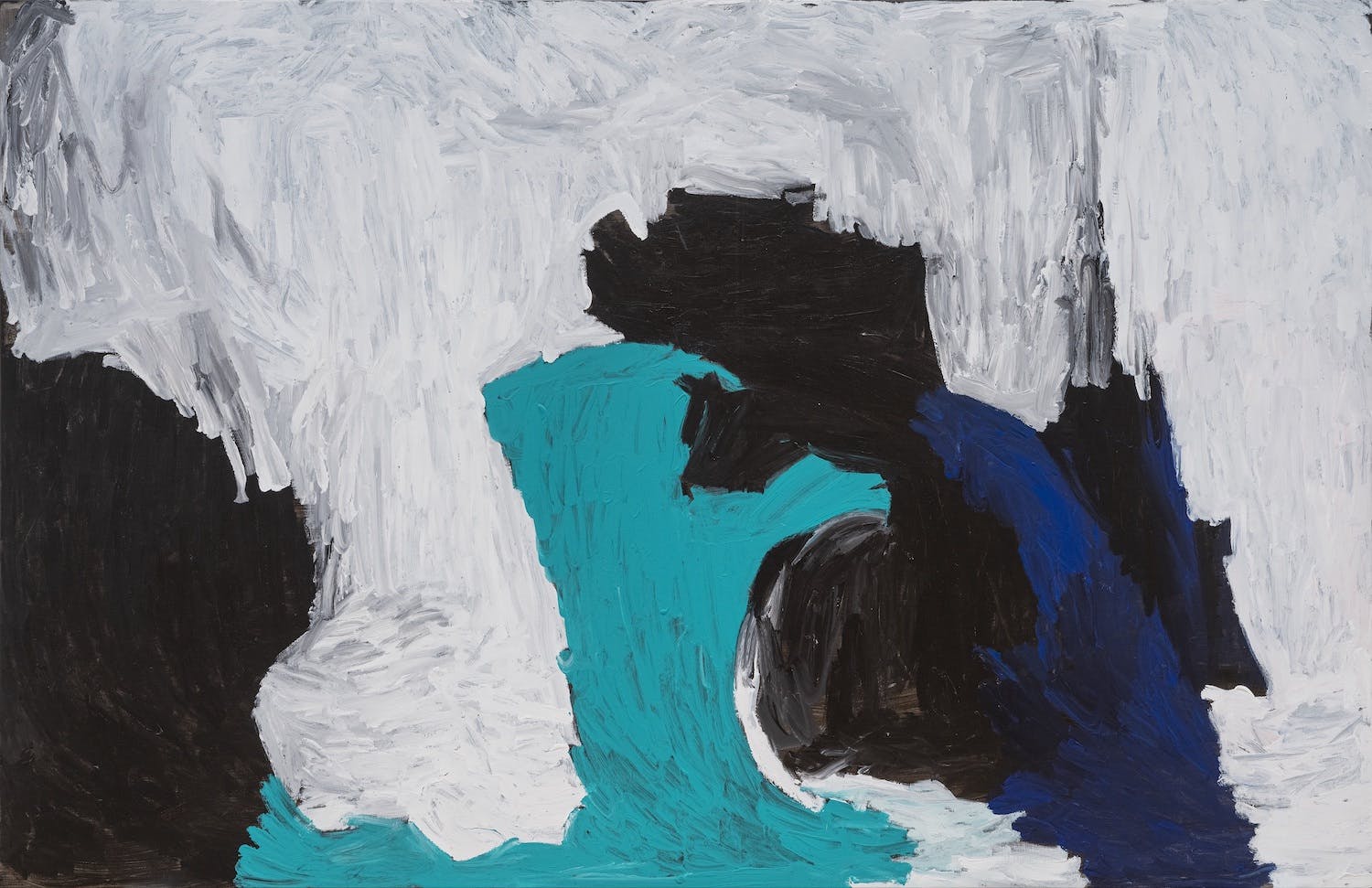
Nyinyilki, 2011, Bendigo Art Gallery, Bendigo, Australia, © The Estate of Sally Gabori © Simon Strong
Within the first hours of discovering the archives, many emotions had emerged. The family reconnected with a cultural lore that was affected by the forced exile of their parents. Suddenly, the meeting became a pretext for elders to tell youngers about tradition and stories, funny anecdotes about an aunt, or heroic story about the grandparents - just as a family does. Speaking about the history loosened their tongues and more members of the family wanted to join the conversation. From the 6 members gathered in Cairns, eventually there was a group of 15 of them: everyone with something to add to the stories. While finalizing the selection of the paintings for the exhibition, Bella Gabori (Sally Gabori’s niece) warned me “This is art but bear in mind that this is also our history”.
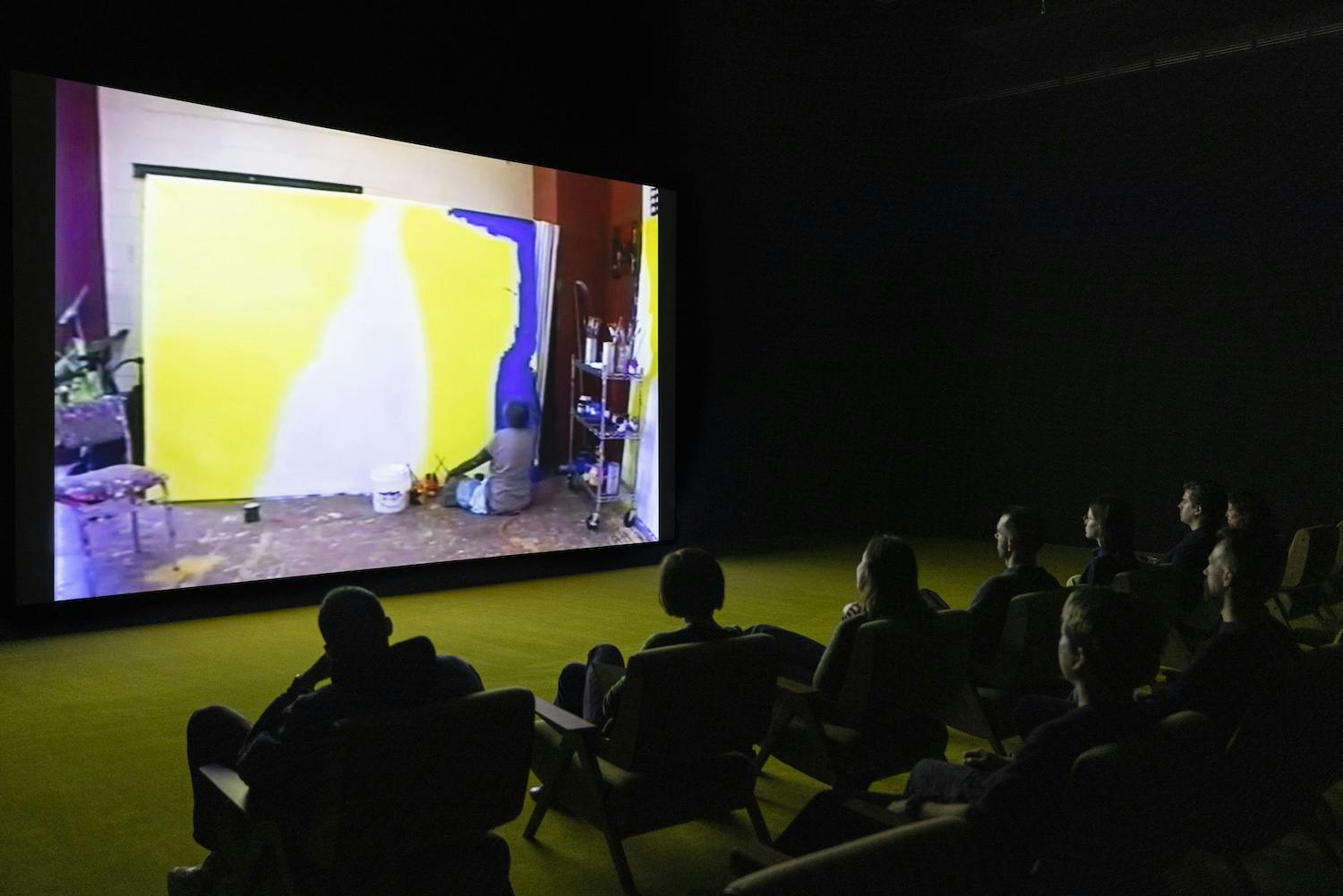
Photo Gianluca Di Ioia
Then more than ever, we were convinced that their voices needed to be heard within the exhibition. But the question was how to exhibit archives. We needed to create a system to gather all images around Sally Gabori that would not label the Kayadilt culture as something that belongs to the past but on the contrary to reveal the great vivacity of the new generation. This tool also needed to be able to function as a resource for the community to later consult, as well as enrich and narrate their own story, separately from the exhibition – a website dedicated to Sally Gabori’s story, as the great painter and Kaiadilt woman she was, as well as the legacy she left to the entire community. The website has been built side by side with the community, then submitted for approval in its final shape It is accessible in the exhibition of Sally Gabori at Triennale Milano until 14 May 2023, and on Fondation Cartier’s website.
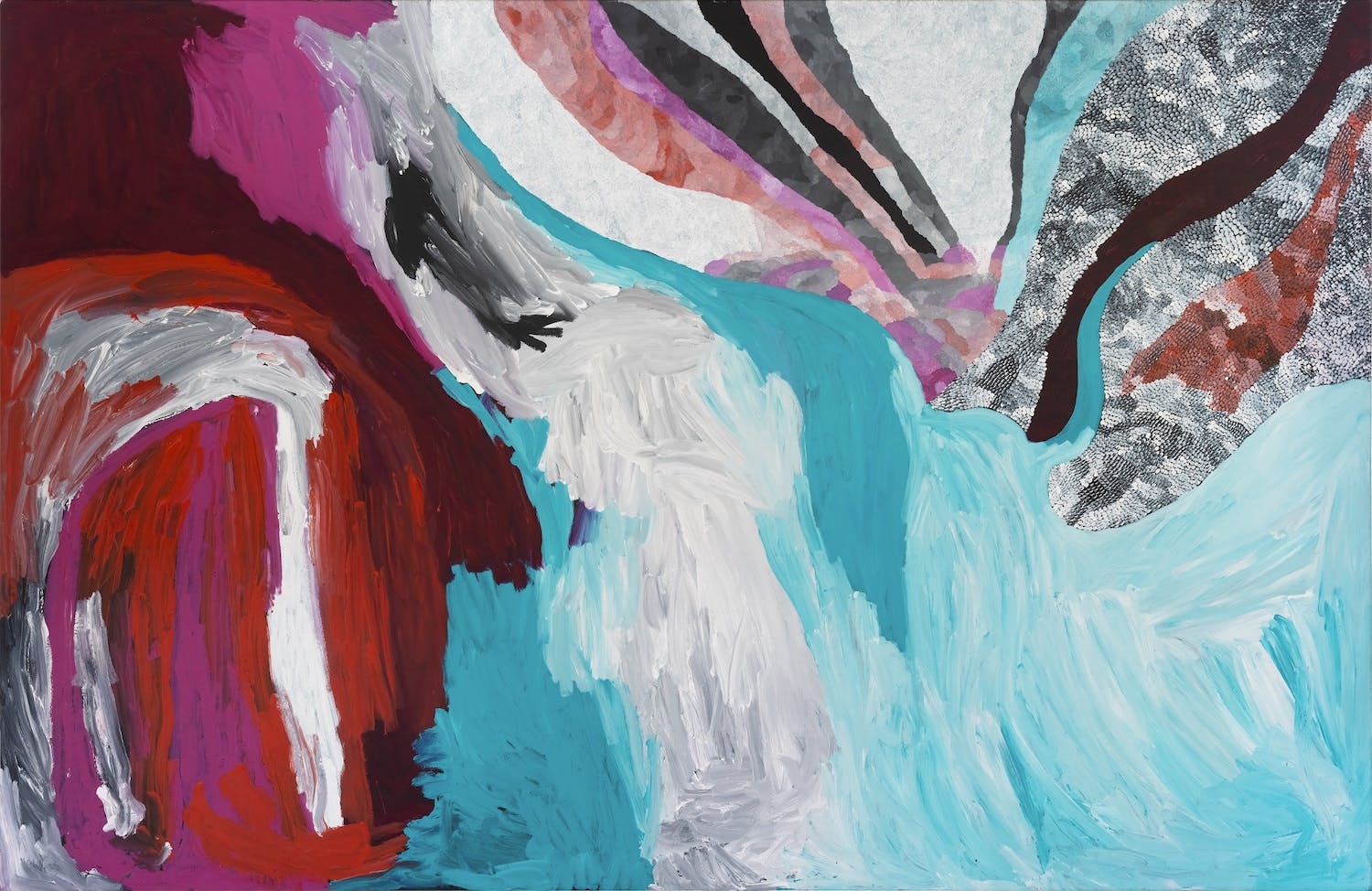
Pat and Sally’s Country, 2011, Patricia Roberts, Melbourne, Australia, © The Estate of Sally Gabori © Simon Strong
Exile and uprooting are perhaps some of the most shared forms of violence in a global world shaped by colonialism and capitalism: rural exodus, emigration, land appropriation and privatization, forced exile… We found this process of showing and tell to be the best response to how our curatorial practice as art institution could be a way to let unknown cultures emerge by the way of the arts born inside the communities as well as to spread awareness in order to contribute to reconciliation. To curate in a very etymological way – curare, taking care. Voices raise, from those who have been muted for so long, to connect with their own story the way they choose.
Related events
